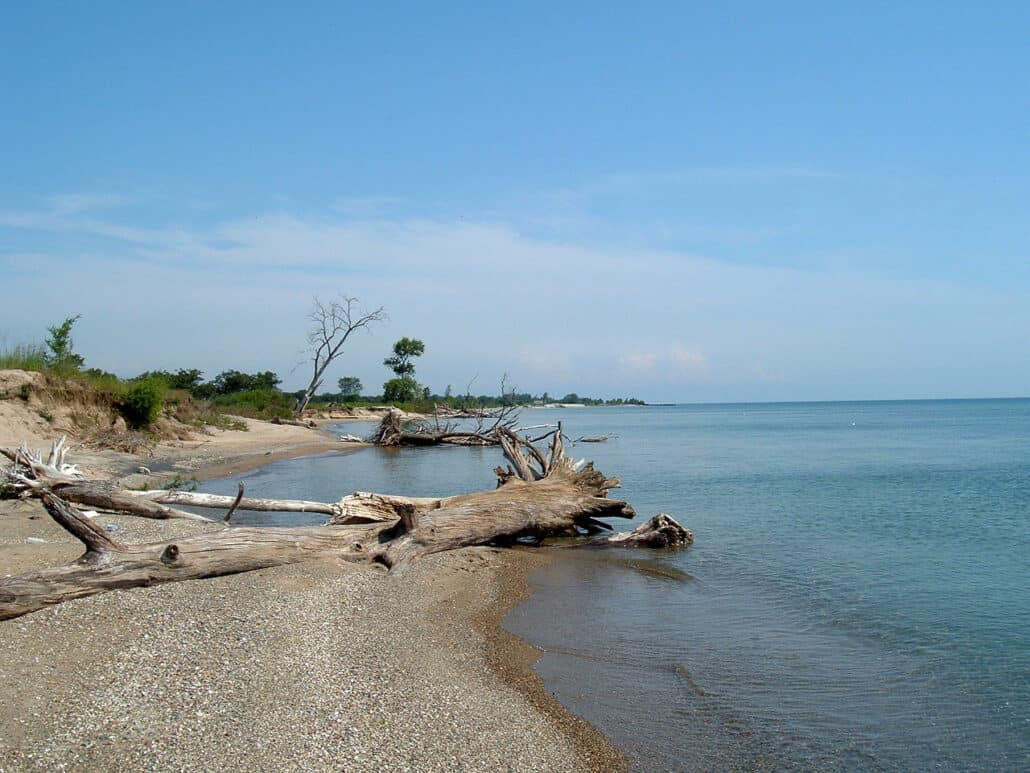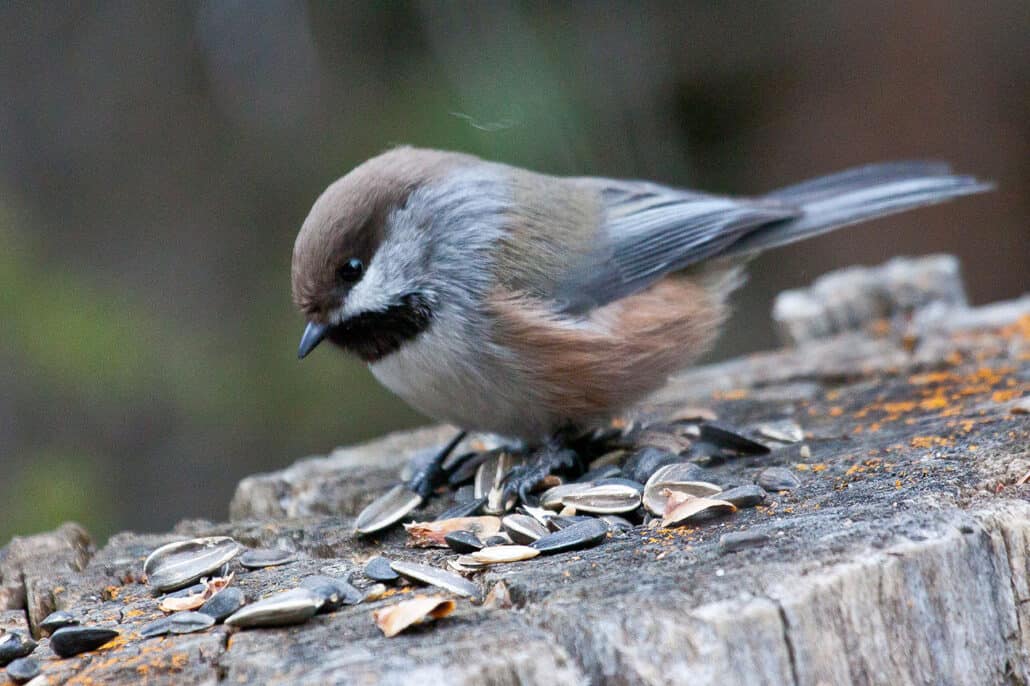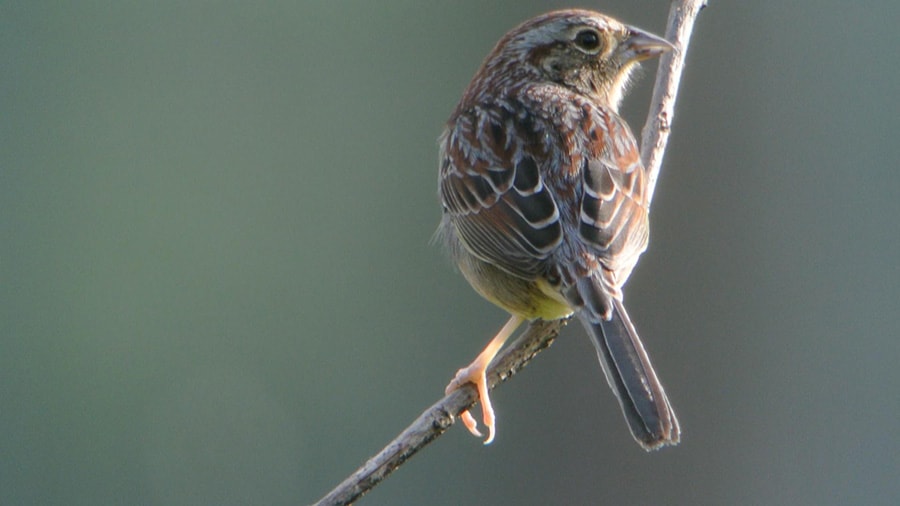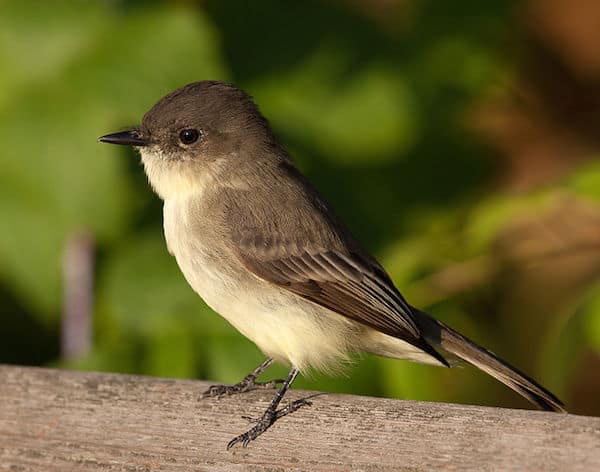Illinois Beach State Park
Lake Front Drive, Zion, Illinois 60099
(847)662-4828
More than six miles of Lake Michigan shoreline and thousands of acres of oak woods, marshes, and pines comprise this state park off Sheridan Road near the Wisconsin border in Zion, Illinois. Each season presents a different scenic view and suite of birds.
The big show in fall is the raptor migration, when you can join volunteer hawk counters at the park’s North Unit. The broad-winged hawks begin in September, followed by plentiful sharp-shinned hawks and fewer, but impressive numbers of merlins, peregrine falcons, and bald eagles as well as numerous red-tailed hawks.
In fall and spring migratory songbirds including flycatchers, grosbeaks, tanagers, and dozens of species of warblers feast in the oaks and meadows. Shorebirds including sanderlings and the rarer red knot walk along Lake Michigan, searching for food.
Waterfowl such as grebes, scaup, goldeneyes, and scoters move along the shoreline in late fall, with some lingering in winter. Irruptive cold weather species such as red crossbills and red-breasted nuthatches visit the park in winter, especially in the pine stands.
More than 300 bird species have visited the park including some real rarities such as the state’s first red-cockaded woodpecker, a federally endangered species.
Montrose Harbor and the Magic Hedge
Chicago Park District, 425 East McFetridge Drive, Chicago, IL 60605
(312)747-1457
Arguably the state’s best spot for migrants and rarities, Montrose Harbor and the Magic Hedge consist of a vegetated peninsula jutting into Lake Michigan. More than 325 species of birds, including some rarities such as Kirtland’s warbler, have stopped here.
Some days can be quiet. But on other days, when the winds are just right in spring (May) and fall (September) thousands of migrants land on the trees and shrubs to rest and forage, giving birders a spectacular show.
Volunteers and the City of Chicago have been working to restore this small but important migratory hotspot. For example, non-native bluegrass has been converted to taller native grasses, attracting migrating sparrows—17 sparrow species have been seen in one day in October.
You can reach this birding hot spot via Montrose Avenue. Follow Montrose east all the way to reach Lake Michigan. At the bait shop, turn right, drive about a block, park along the street, and join the other birders.
Midewin National Tallgrass Prairie
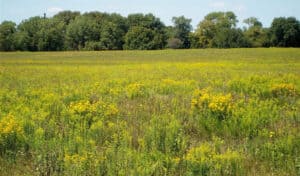
30071 South State Route 53, Wilmington, IL 60481
(815)423-6370
Twenty-one native ecosystems, including oak savanna and sedge meadow, make up some 20,000 acres in the nation’s first designated tallgrass prairie, located near Chicago’s southernmost suburbs. The federal and state governments are working to open more and more of this former military arsenal to the public. Visitors can now camp here, as well as walk some trails.
Midewin provides habitat for 110 species of breeding birds, including some uncommon grassland species.
On an early June morning the site is alive with grassland bird song. Listen for the wolf-whistle call of the upland sandpiper, the rollicking song of the bobolink, and the insect-like song of the Henslow’s sparrow.
Midewin offers good winter birding, too. Short-eared owls, rough-legged hawks, and northern harriers roost and feed here during the colder months.
Since much of this important ecosystem is still being renovated, officials schedule grassland and wetland bird tours during the breeding and migration seasons. You’ll learn about the natural history and habitat needs of Midewin’s birds while observing and photographing them.
Mississippi Palisades State Park
16237A Illinois Route 84, Savanna, Illinois 61074
(815)273-2731
The Mississippi River and its backwater along with mature, forested bluffs and wooded ravines provide a scenic backdrop to the birding experience at this state park in northwestern Illinois. More than 200 species of birds migrate through this 2,500-acre park, and nearly 100 of them remain to breed.
In winter a key attraction is the dozens of bald eagles observed flying above the bluffs or at nearby locks and dams in winter. Also check pine stands in winter for crossbills, pine siskins and red-breasted nuthatches. In March and April, as well as October and November, you can look for migrating waterfowl including American white pelican, gadwall, common goldeneye, and common merganser. April, May, August, and September provide opportunities to observe migrating songbirds including 34 warbler species.
The north trail system offers habitat for breeding Carolina wren, yellow-billed cuckoo, wood thrush, veery, ovenbird, and scarlet tanager. Listen, and watch, too, for the boldly colored pileated woodpecker, a favorite at this park.
Starved Rock and Matthiessen State Parks
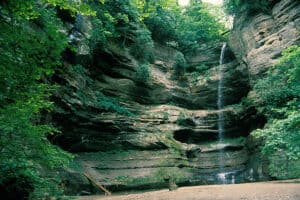
Box 509, Utica, Illinois 61373
(815)667-4726
Starved Rock in northern Illinois proves the state is not all flat. Here, you’ll watch birds as you enjoy stream-fed canyons, waterfalls, and 125-foot-tall wooded bluffs. These habitats as well as the nearby restored grasslands have attracted more than 225 bird species.
Migratory waterfowl and songbirds visit the parks in spring and fall, especially in the woods around Lone Pine Shelter. American white pelicans stop along the Illinois River in spring and fall. In winter, bald eagles and unusual gull species feed at the nearby Army Corps Visitor Center and Lock and Dam. The Starved Rock Audubon Society sponsors a free Bald Eagle Days weekend every January.
In spring and summer, visit the bottomland woods to search for pileated woodpecker, prothonotary warbler, Louisiana waterthrush, Acadian flycatcher, barred owl, and Carolina wren, which breed in the park.
You can stay at the Starved Rock Lodge and Conference Center, but make reservations early—this is the state’s most popular park.
Lake Chautauqua National Wildlife Refuge
19031 E. County Road 2105N, Havana, IL 62644
(309)535-2290
Lake Chautauqua National Wildlife Refuge, designated as a Western Hemisphere Shorebird Reserve, has attracted more than 27 species of waterfowl and 30 species of shorebirds.
The 5,000 acres of floodplain woods, upland forest, open water, and mudflats in southwestern Illinois offer respite for tens of thousands of fall and spring migrants including pectoral sandpipers and lesser yellowlegs. Hundreds to several thousand American white pelicans also travel through the reserve. In late summer, many great egrets and fewer numbers of other heron species stop and rest at this waterbird mecca.
The best way to bird watch here is to join a group with a leader who can take you to the best spots. The Illinois Ornithological Society offers an annual Lake Chautauqua trip at the end of August, one of the best times to see huge concentrations of shorebirds.
Nearby Sand Ridge State Forest, just west of this refuge, is also worth checking. Oak hickory woods, pines, and sand prairie attract another suite of birds including wintering red crossbills and 27 species of migratory warblers.
Carlyle Lake State Fish and Wildlife Area
RR 1, Box 233, Vandalia, IL 62471
(618) 425-3533.
Carlyle Lake, the state’s largest human-made lake, near St. Louis, Missouri, includes 80 miles of shoreline vegetation and mudflats that attract migratory shorebirds, songbirds, and waterfowl as well as winter gulls, owls, and finches.
Bird here any time of year for different groups of birds and the always-possible rarity.
In September jaegers as well as Sabine’s gull have been found on the lake nearly ever year. Rent a boat and look for those and more common species including ducks and geese.
In late fall and winter hundreds of snow geese rest on the water, with fewer numbers of greater white-fronted geese and the occasional Ross’s goose.
For migratory songbirds, visit the Cherokee Nature Tail and Eldon Hazlet State Park, within the confines of the wildlife area.
In summer thousands of double-crested cormorants feed and nest here; this site holds the state’s largest breeding colony of these waterbirds.
Eurasian collared-doves and monk parakeets hang around the Carlyle grain elevator year-round.
Prairie Ridge State Natural Area and Newton Lake State Fish and Wildlife Area
4295 N. 100th Street, Newton, IL 62448
(618)783-2685
Here is the place in Illinois to see the state-endangered greater prairie-chicken put on its fascinating courtship display. In March and April, nature lovers join guided tours to visit these state-owned lands in southeastern Illinois to watch the prairie-chickens from viewing blinds at dawn.
This 1,700 site of woodlands, grasslands, meadows, wetlands and agricultural fields also attracts other rare species to breed including loggerhead shrike, northern harrier, short-eared owl and Henslow’s sparrow.
Year-round look for northern mockingbirds—and in winter, watch for rough-legged hawks. In winter, you might also enjoy watching the “changing of the guard” at dusk as northern harriers finish feeding for the day while short-eared owls move in on their territory to begin the night-time hunt.
In spring and summer you can find plenty of wading birds in the marshes, and at the large cooling lake, ducks and other migratory waterfowl abound.
At least 250 bird species have been documented here. Access is restricted in some places, so check with the office first to learn where you can go to get the best birding experience.
Pine Hills/LaRue Ecological Area, Shawnee National Forest
Route 45 South, Harrisburg, IL 62946
(618)253-7114
This 4,200-acre southern Illinois site proves again that the Prairie State is anything but flat. Here you’ll find steep scenic bluffs overlooking the Big Muddy and Mississippi Rivers and the LaRue Swamp. Spring through early fall are ideal for birding. Spring brings an influx of migrants and early summer offers the best chance to hear and see some southern Illinois breeding specialties. Explore the steep ravines and forests to listen for the breeding worm-eating warbler, Kentucky warbler, Acadian flycatcher, wood thrush, yellow-billed cuckoo and scarlet and summer tanagers, among many others.
The campground area attracts breeding ruby-throated hummingbird, yellow-throated warbler, eastern wood-pewee, and red-eyed vireo. Also look for black vultures soaring overhead and listen for the uh-uh call of the fish crow, a species to be found only in extreme southern Illinois. In the LaRue Swamp bottomlands, you’ll find abundant breeding wood ducks and prothonotary warblers. Late summer, look for large concentrations of herons and other wading birds.
Cypress Creek National Wildlife Refuge
0137 Rustic Campus Drive, Ullin, IL 62992
(618) 634-2231
Designated as a wetland of international importance, this 14,000-acre site will eventually be expanded to include more than 35,000 acres of oak barrens, bottomland forests, and swamps containing large bald cypress trees that are hundreds of years old. Situated between the Ohio and Mississippi rivers in southern Illinois, Cypress Creek offers a bit of a wilderness experience to birder watchers.
Those feeling less adventurous can check the Frank Bellrose Unit in spring and fall for migrating shorebirds and marsh birds and large numbers of wintering waterfowl, such as canvasback duck. Or you can just drive along Cache Chapel Road to look for breeding northern mockingbird, blue grosbeak, orchard oriole, and loggerhead shrike.
The cypress/tupelo swamps attract prothontary and yellow-throated warblers and northern parula to breed. Listen in spring and summer for the loud kleeyur call of the red-shouldered hawk at day and the chuck-will’s-widow, a southern Illinois specialty, calling its name at night.
Interspersed throughout this huge refuge are grasslands that attract breeding Henslow’s sparrow and bobolink as well as wintering northern harrier and short-eared owl.

